Best ND filters: the 8 best choices for creative photography
Extend your exposures for creative results with an ND filter

Looking for the best ND filters you can buy right now? Whether you're looking for a square or circular neutral density (ND) filter, we've tested all of the latest ones to bring you this in-depth guide to the finest ones available right now.
Our top pick for the best ND filter right now is the Lee Filters Stopper range, which are superbly constructed and come with bonus extras like a companion app for calculating the right exposure settings. But they're not necessarily the best choice for everyone, so read on to find out how to choose the right ND filters for you.
Why buy an ND filter?
Why you can trust TechRadar
Photography is all about light, but sometimes there can just be too much of a good thing. Venture out on a sunny day and you’ll need a fast shutter speed even at fairly narrow aperture settings. That’s great for freezing the action but a real pain if you’re aiming for long exposures.
ND (Neutral Density) filters can save the day. They’re essentially dark grey filters that reduce the light transmitted to the lens, so you can extend your exposure times, often up to the equivalent of six or even ten f/stops. For example, if sunny conditions give you a shutter speed of 1/30th of a second at f/20 (ISO 100), a six-stop or ten-stop filter will give you long exposures of two seconds or 30 seconds respectively.
Long exposures can also be great for cityscapes and architectural photography, enabling you to blur bustling pedestrians out of the shot. Yet another popular use of ND filters is for gaining a tight depth of field by using wide aperture settings even under bright daylight, without the risk of overexposure due to your camera’s maximum shutter speed not being fast enough. It’s particularly good for sunny-day portraiture.
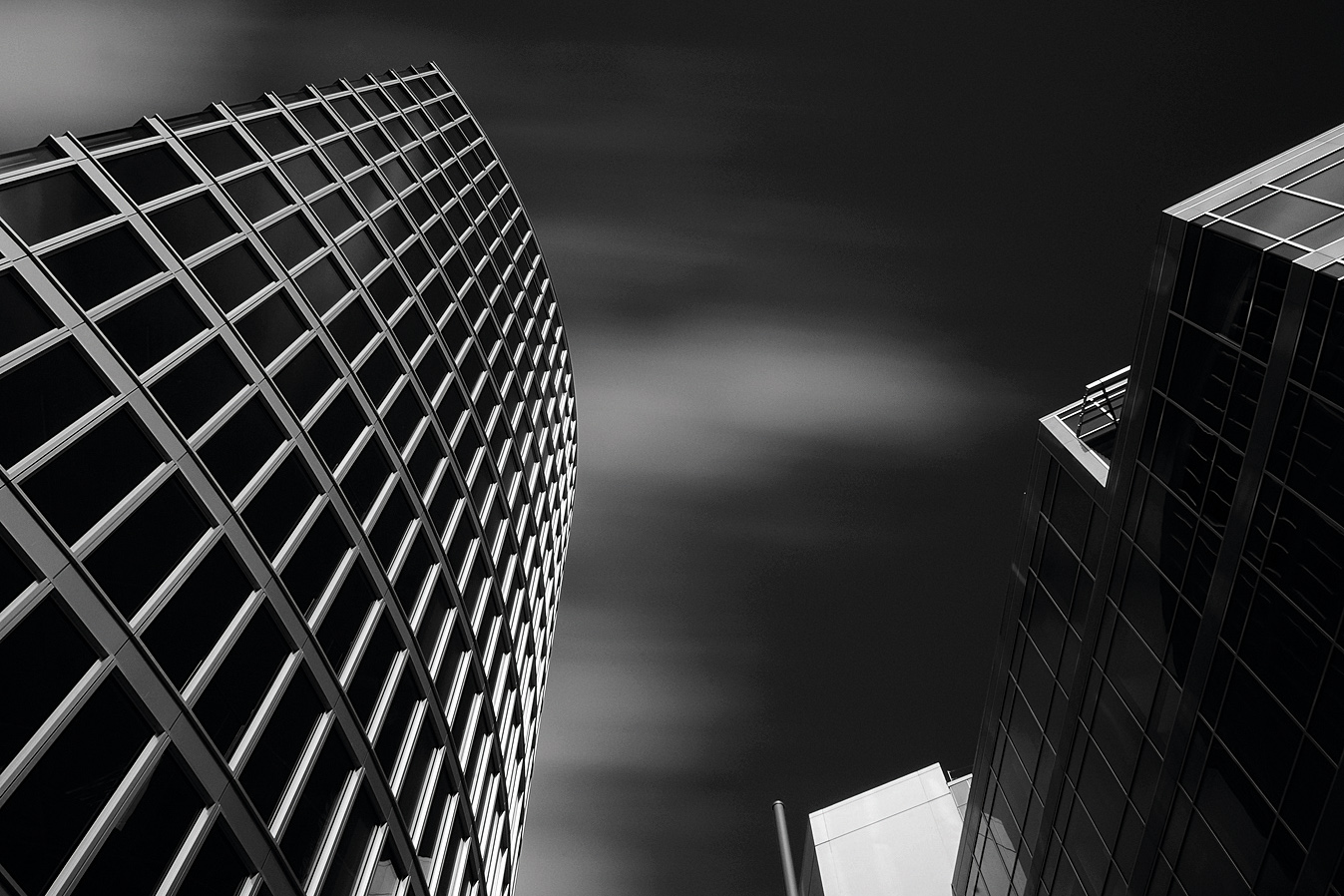
Which type of ND filter is right for me?
High-power ND filters are ideal for landscape photography where you want to give a milky smoothness to flowing water over waterfalls and weirs or through rapids. They’re also great for smoothing the appearance of choppy water on rivers, lakes and the sea, as well as for making clouds streak across the sky.
But sometimes a 10-stop ND filter will be too powerful. For example, you might want to take portraits on a sunny day, using a wide aperture to give a tight depth of field that blurs the background. The problem here is that to maintain a good exposure with a really wide aperture you’ll usually need a faster shutter speed than your camera can deliver; an ND filter with a more modest density, typically equating to around two or three f-stops, is the solution.
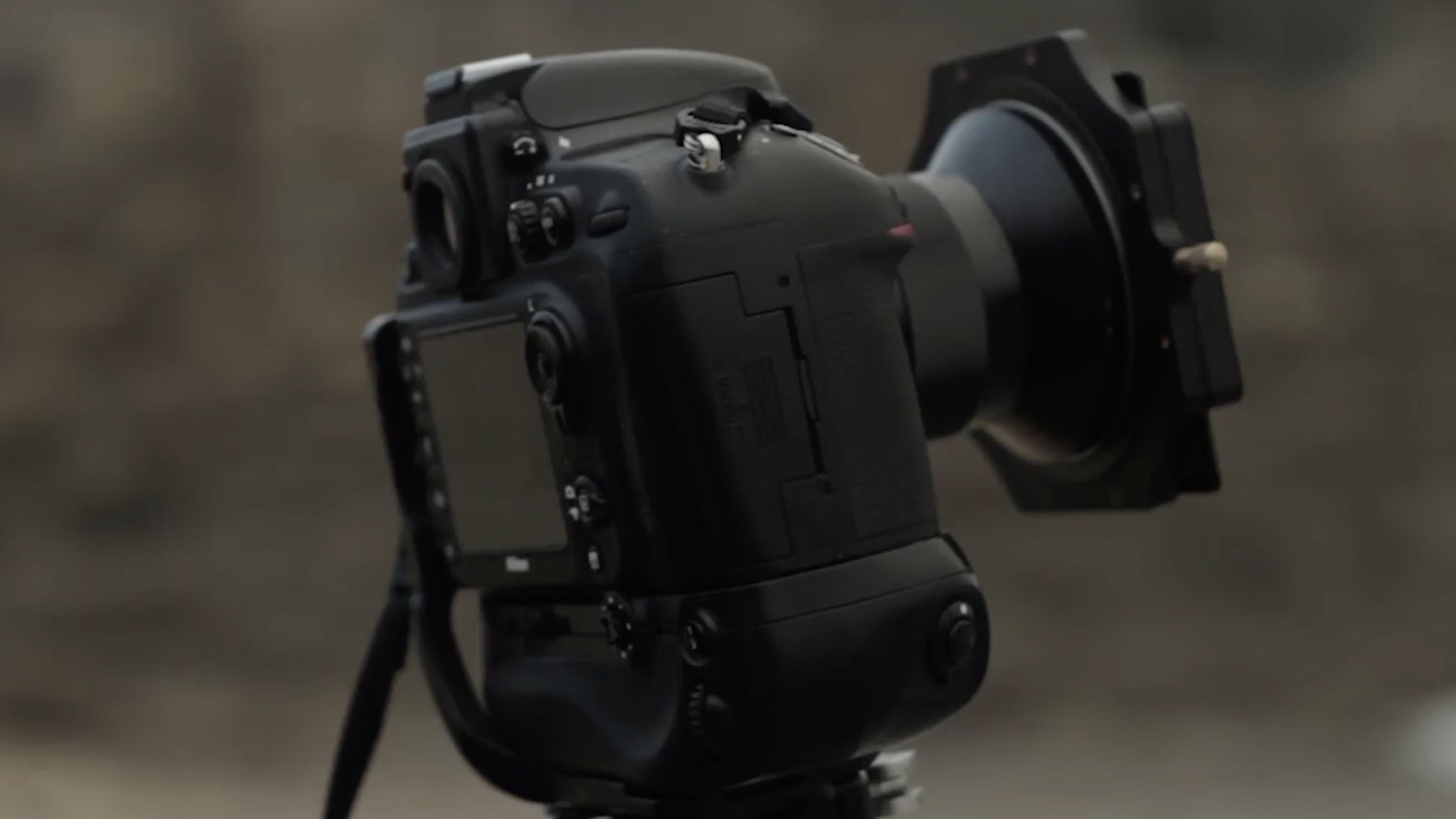
Many manufacturers now make ND filters in a wide range of stopping powers, from a single stop to 10 stops or even more – you may need to get two or three different densities to suit your needs. Another option is to go for a so-called 'fader' or ‘variable ND’ filter. These are constructed from a pair of polarizing filters and, when one is rotated against the other, you can typically adjust the stopping power between two and eight stops.
Regular ND filters tend to enable better image quality for stills photography and are more straightforward to use, while fader filters are generally more popular with videographers.
Many manufacturers now make ND filters in a large range of stopping powers, from a single stop to 10 stops or even more
Square or circular?
The two main types of ND filter are square and circular. Square filters attach to a filter holder, which then fastens to the front of your lens via an adapter ring. Considering that, especially with DSLRs rather than mirrorless cameras, a powerful ND filter gives you a virtually black viewfinder image, this arrangement can be preferable.
You can attach the adaptor ring and maybe also the filter holder to your lens, compose the shot, apply the correct focus distance and exposure setting, then simply slip the filter (or filter plus filter holder) into place, make the necessary shutter speed adjustment, and take the shot.
Screwing in and unscrewing a circular filter to your lens’s attachment thread on a shot by shot basis can be a relatively time-consuming chore. Either way, here’s our pick of the best ND filters and filter kits currently on the market.

The best ND filters in 2020:
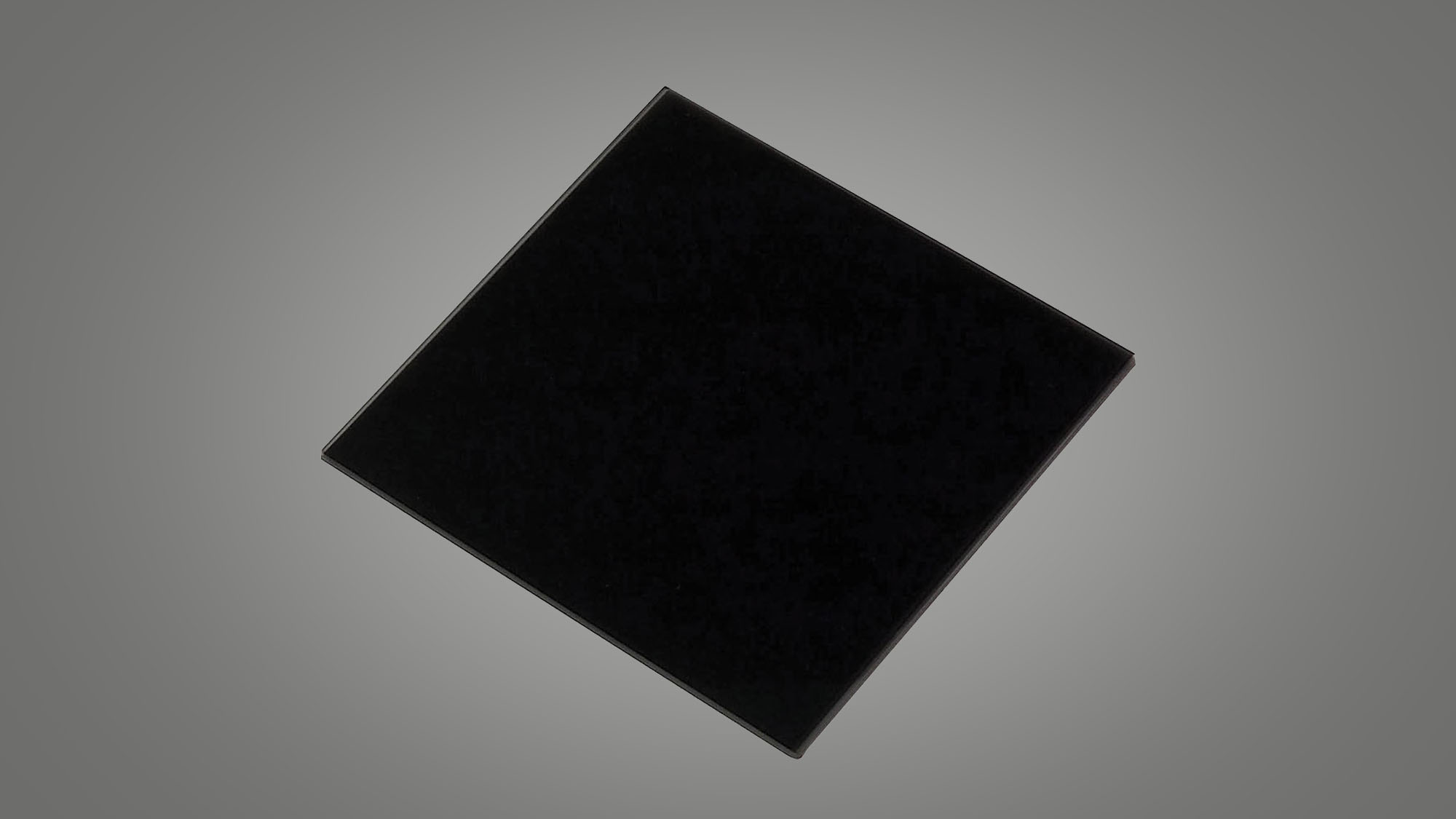
1. Lee Filters Stopper
Reasons to buy
Reasons to avoid
Famous for its hand-made, high-quality filters, Lee is a British company that was established back in 1967. One of its most famous filters is the Big Stopper, which has a 10-stop rating. The Stopper range of square filters has now been extended to include the Little Stopper, with a 6-stop rating, and the 15-stop Super Stopper. Different physical sizes are available for each filter, to suit Lee’s Seven5 (75mm), 100mm and SW150 (150mm) holders.
Lee filters and the holder components certainly don’t come cheap, but build quality is excellent throughout. Overall, the system works extremely well and is ideally suited to pro-grade photography. Indeed, the SW150 Mk II filter system includes adapters for leading ultra-wide lenses with built-in hoods, which preclude the attachment of a holder via a screw-in adaptor ring. There’s even a companion app that enables you to calculate the right exposure when adding any Stopper filter.

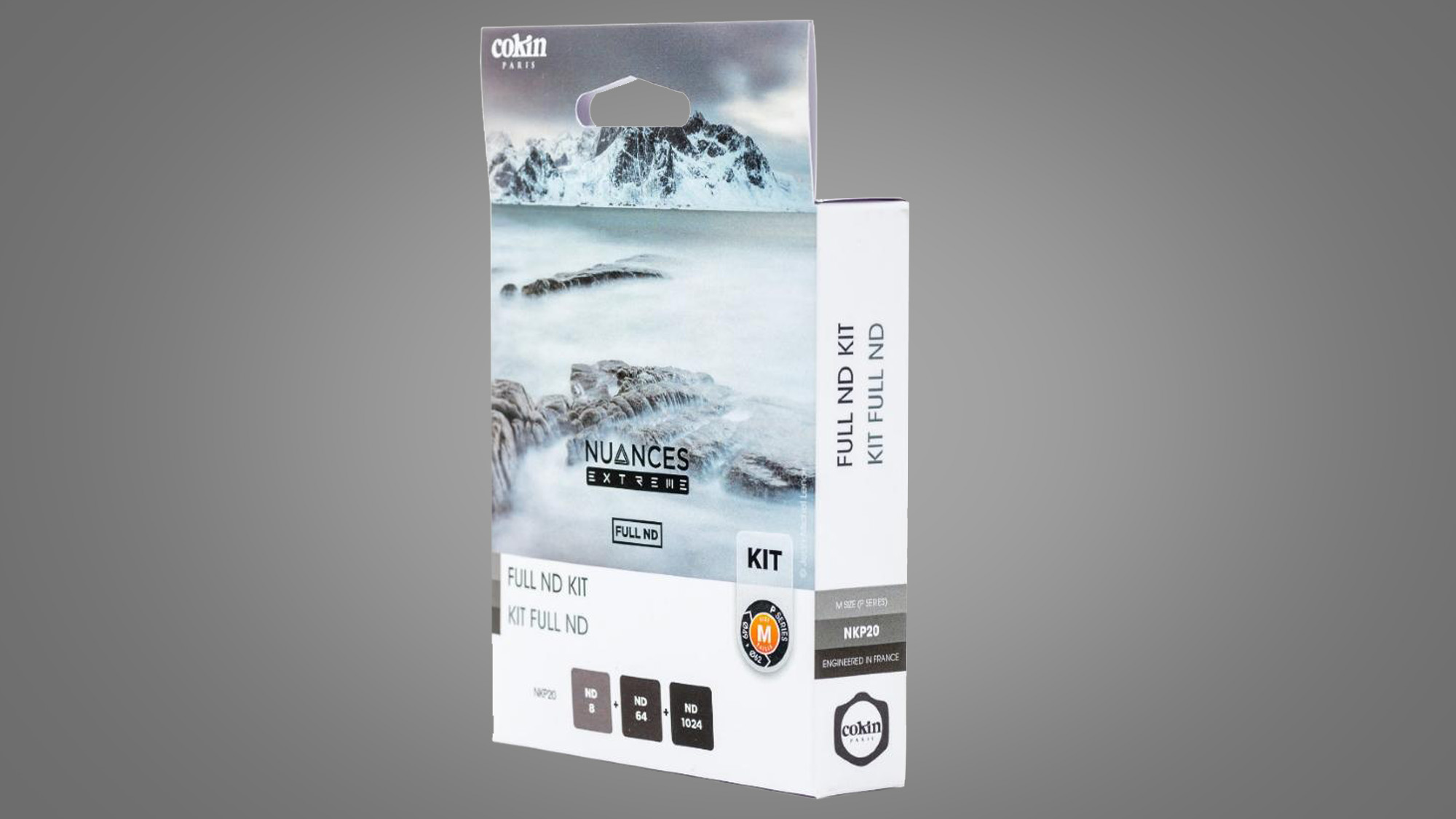
2. Cokin Nuances Extreme Full ND Kit
Reasons to buy
Reasons to avoid
Cokin’s legendary square filter systems gained huge popularity for film photography in the 1980s and are still going strong today. The latest high-end range of Nuances Extreme filters are made from shock-resistant tempered mineral glass, and this new kit comprises ND8, ND64 and ND1024 filters, with 3-stop, 6-stop and 10-stop ratings respectively.
Three sizes are available, in medium, large and extra-large, or P, Z-Pro and X-Pro in Cokin’s familiar terminology, with 84mm, 100mm and 130mm widths. These will suit a wide range of lenses with different attachment thread sizes but you also need to keep an eye on the focal length. For wide-angle shooting, Cokin recommends a minimum focal length of 24mm (P), 22mm (Z-Pro) and 18mm (X-Pro), on a full-frame camera.
The companion Cokin Evo Filter Holder costs an additional £129/$105 in the Z-Pro size, and adapter rings cost around £30/$40, in a range of 49-95mm thread diameter sizes. The Evo filter holder has a padded surface to stop light seeping in but the two higher-density filters are supplied with additional foam pads in case you want to use them with other holders. The quality of all components is extremely good but, similar to Lee’s Stopper filters, they give a slightly cool color cast.

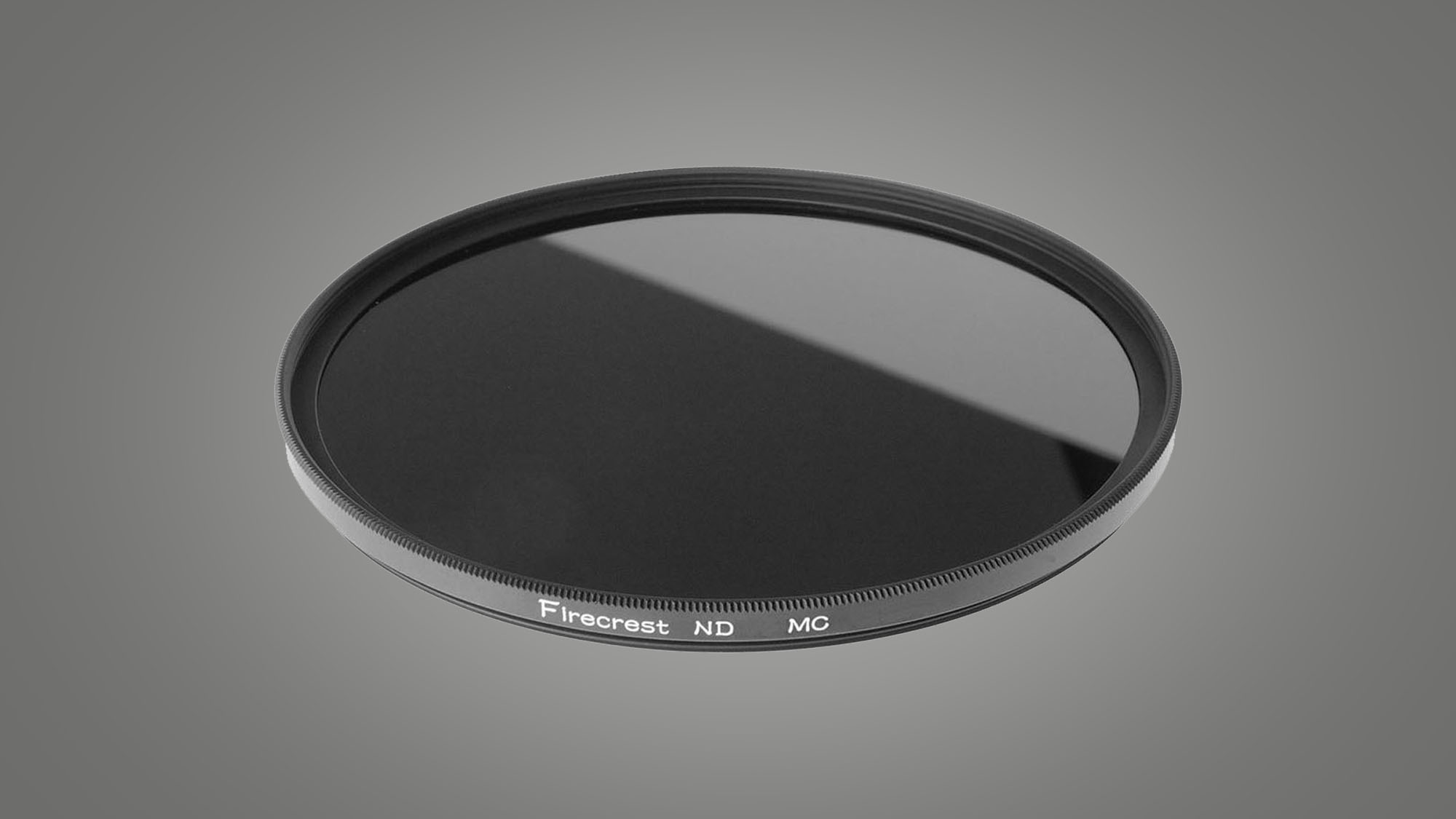
3. Formatt-Hitech Firecrest ND
Reasons to buy
Reasons to avoid
Based in Wales, the Formatt Hitech company manufactures a wide range of high-quality filters, and its Firecrest ND filters come in a wider range than most. For starters, you can choose between square or circular options. Square filters are available in five popular sizes to fit pretty much any holder type, and in everything from 1-stop to 10-stop densities, in single-stop increments. Then there are Firecrest 13 and 16 options, with 13-stop and 16-stop ultra-high-density ratings respectively.
In the round camp, there are ‘super-slim’ stackable circular filters available in a huge range of 29-127mm thread sizes. Again, single-stop increments are available between 1-stop and 10-stop, while the 13-stop and 16-stop circular filters are available in 72mm, 77mm and 82mm sizes. Superbly well made, Firecrest ND filters are based on ‘rare earth metals’ applied to glass by an electrolytic process. They performed extremely well in our tests, with excellent color accuracy.

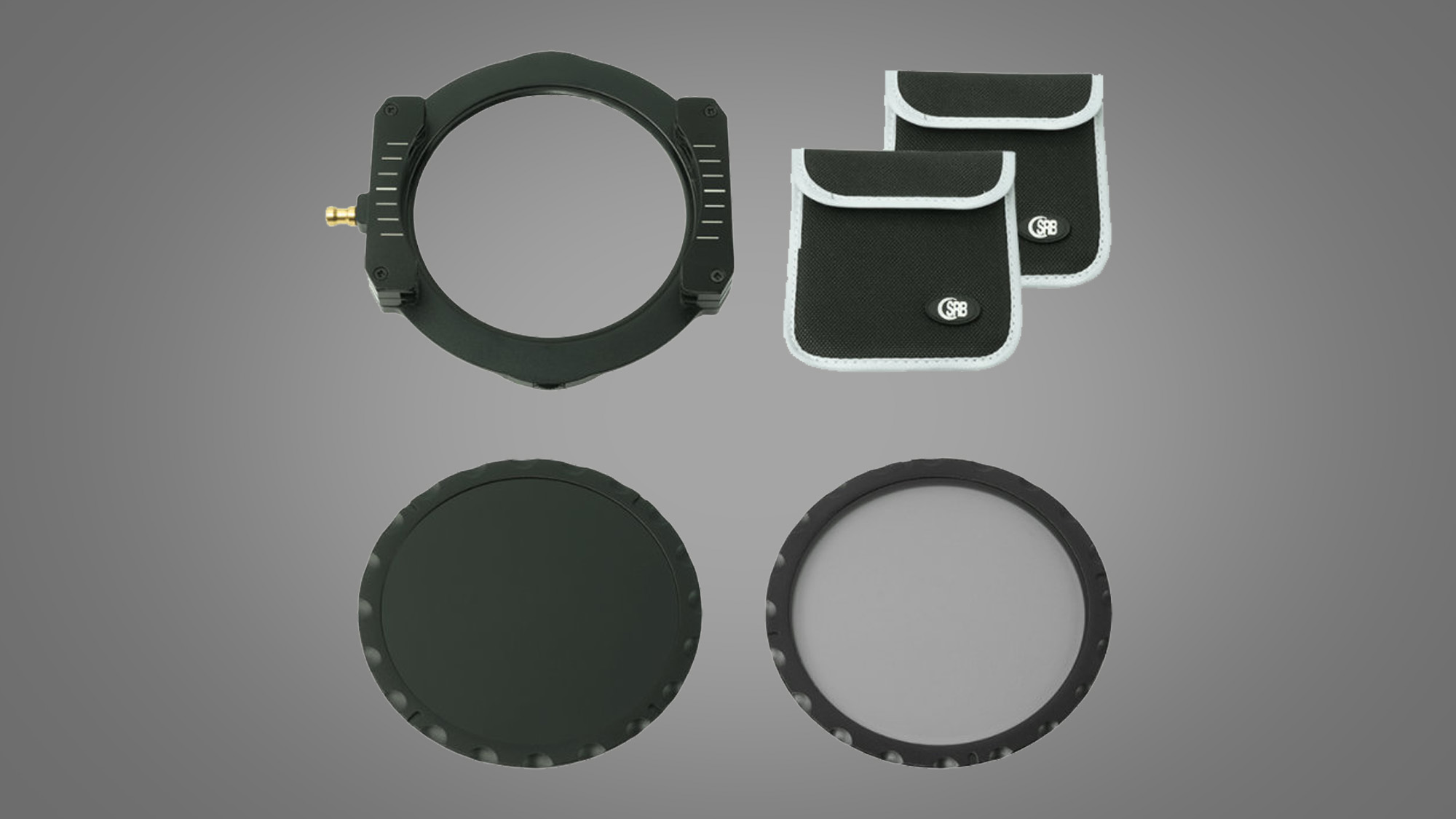
4. SRB Elite Bundle Kit
Reasons to buy
Reasons to avoid
This new kit from SRB Photographic combines a square filter holder for 84mm-width square or rectangular filters, and two circular ND1000 (10-stop) and circular polarizer filters, which have an 82mm diameter. That might seem a strange mix, but the filter holder also includes a threaded circular cut-out, for adding a circular filter. It works very well in practice, as you can screw the ND1000 filter into the holder, than attach it and detach it to the adaptor ring on the lens very quickly and easily.
For high-powered ND filters, it’s much easier and more intuitive than using circular filters that attach directly to the lens. Both of the filters supplied in the kit are very good quality, as is the filter holder, making them incredible value for money at the price. The same goes for the attachment rings, which are available in a wide range of popular sizes from 49mm to 82mm , and only cost around $10/£8 each. That’s far cheaper than attachment rings sold by most other filter system manufacturers. SRB also sell a wide range of other ND filters of various strengths, including a very good 84mm square ND64 6-stop glass filter, at $39/£30, which works a treat with the Elite filter holder.

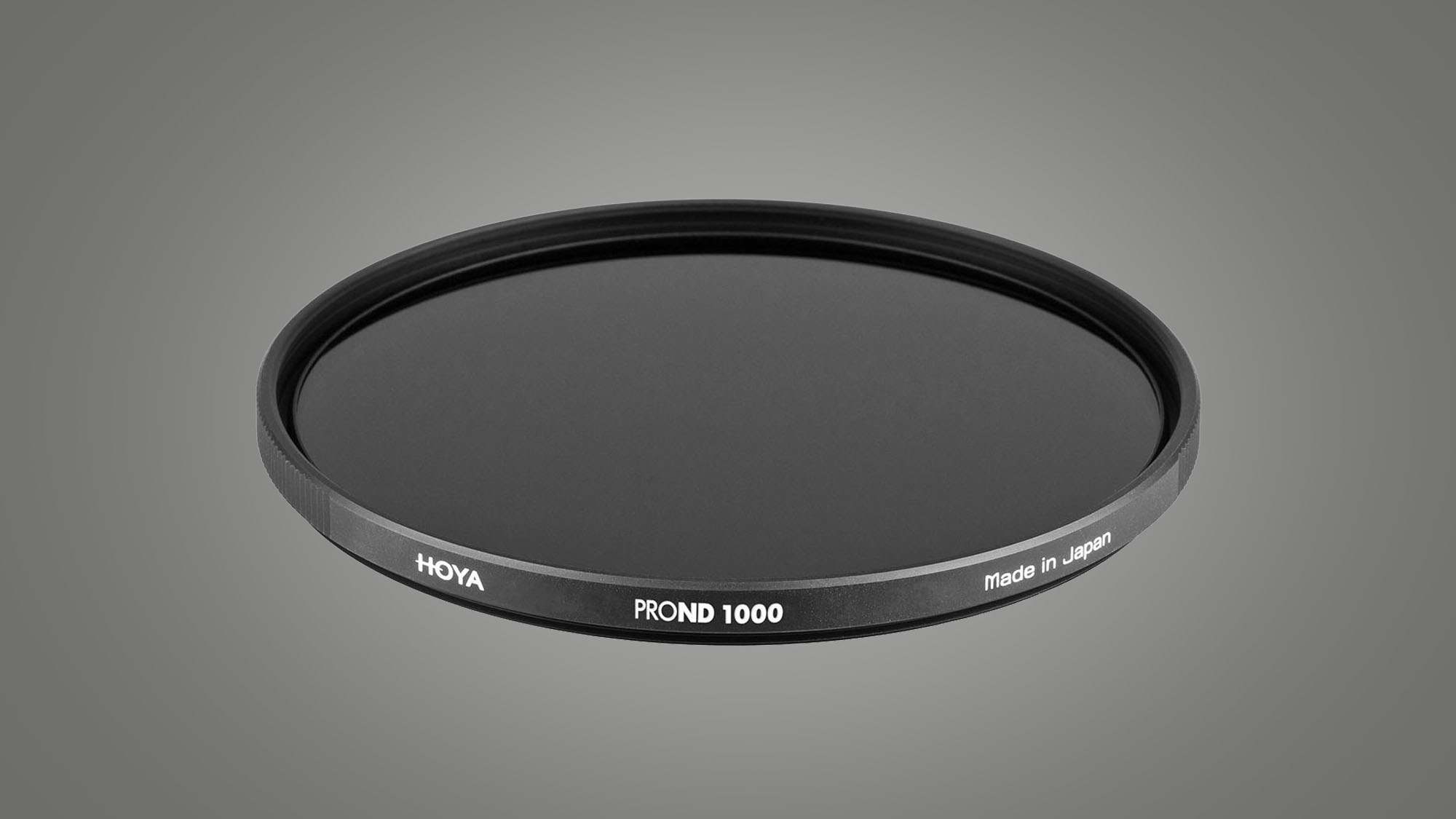
5. Hoya ProND
Reasons to buy
Reasons to avoid
Just as Cokin made square filters famous, Hoya is the first name most people think of for circular, screw-in filters. Typical of the company's output, the ProND range of filters is well crafted from high-quality materials, and features black frames that help to minimize unwanted reflections. Light-stopping power comes courtesy of ‘ACCU-ND’ metallic coatings, which enable precise levels of light reduction with negligible color shift.
The range has grown to include nine filters which give reductions of between one and nine f/stops, most with a variety of thread diameters from 49mm up to 82mm. For really high stopping power, there’s a 10-stop ProND 1000 filter in 46-95mm sizes, and a 16.6-stop ProND 100000 in 58-82mm sizes. Prices are pretty competitive throughout the range, and throughout our tests we found performance to be fabulous.

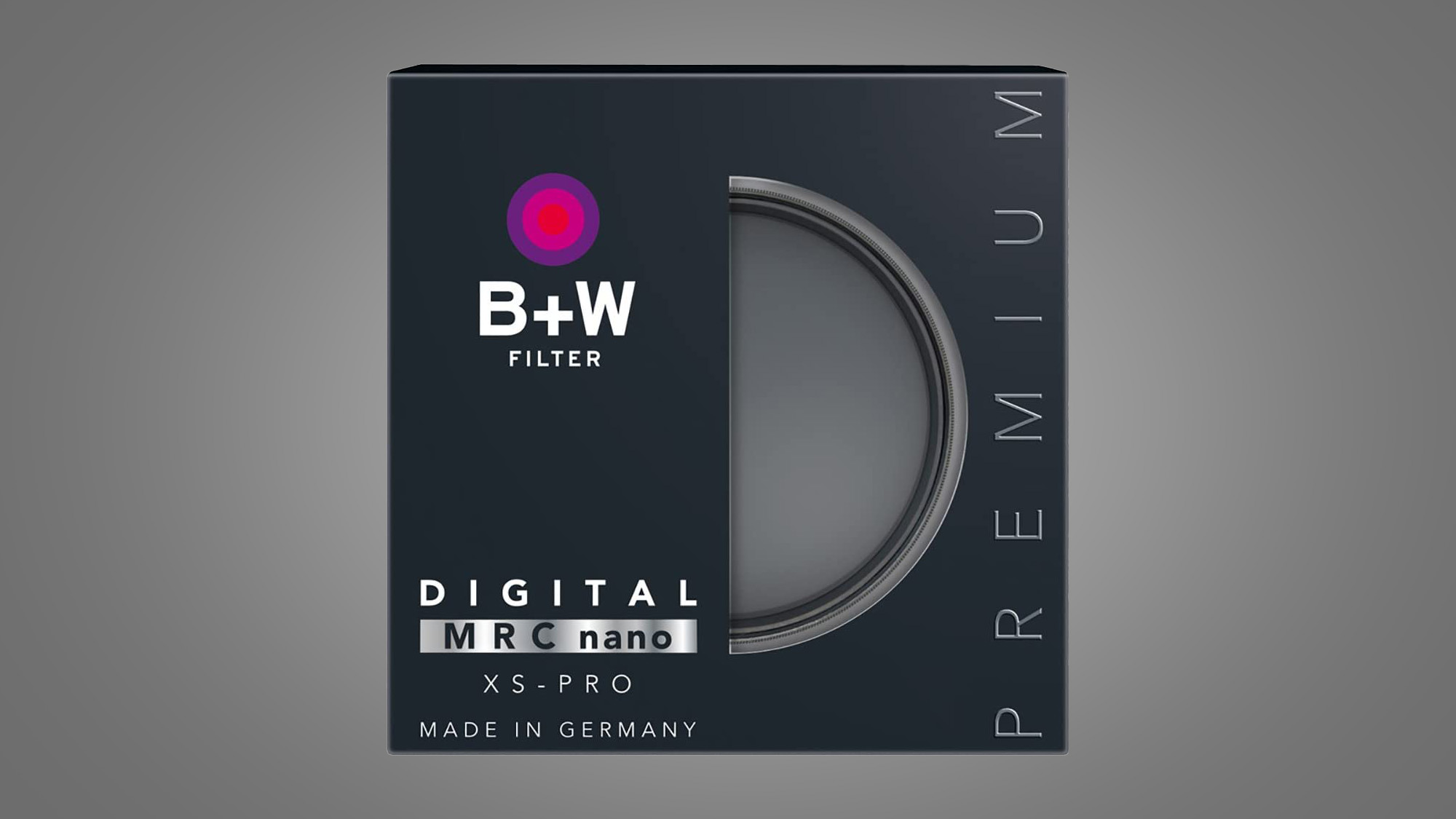
6. B+W ND 800 Series 3.0
Reasons to buy
Reasons to avoid
Part of the highly acclaimed Schneider Kreuznach company, B+W is a German filter manufacturer. The recently launched ND800 series is based on high-quality glass with a combination of coatings to boost performance. Indeed, there are no less than seven layers applied to both sides of the glass, including nano-structure coatings and an outer layer that repels moisture and greasy finger-marks.
Different densities on offer include the 802 (ND 0.6, 2-stop), 804 (ND 0.9, 3-stop), 806 (ND 1.8, 6-stop and 810 (ND 3.0, 10-stop). Another bonus is that the black casing of the filters has a low profile, reducing the risk of vignetting, especially when used with wide-angle lenses. However, the use of screw-in filters for high densities like 6-stop and 10-stop can be a pain if you need to keep removing them and reattaching them to compose different shots.


7. Kenko REALPRO ND 1000
Reasons to buy
Reasons to avoid
The packaging of Kenko filters, as well as their look and feel, is virtually identical to that of Hoya’s premium ranges of filters. That’s no real surprise, as they’re both part of the Japanese ‘Kenko Tokina Company’, which makes lenses and teleconverters as well as filters. The Kenko REALPRO ND 1000 is a circular screw-in 10-stop filter that’s available in a wide range of popular sizes, including 49mm, 52mm, 55mm, 58mm, 62mm, 67mm, 72mm, 77mm and 82mm.
Naturally, as with other circular filters, if you want to use them on a variety of lenses with different attachment threads, it’s best to buy the filter that fits your largest lens, and use step-up rings for the other lenses. Exotic coatings include the use of Vacuum Deposit coating technology to minimize color-shift and Anti-Reflection Multicoating to reduce ghosting and flare. The black satin ‘Almite’ finish on the metal frame helps to prevent unwanted reflections, further boosted by the outer rim of the glass being treated with a special black ink. Performance is very good and, ultimately, there’s practically nothing to choose between this filter and the Hoya ProND 1000.

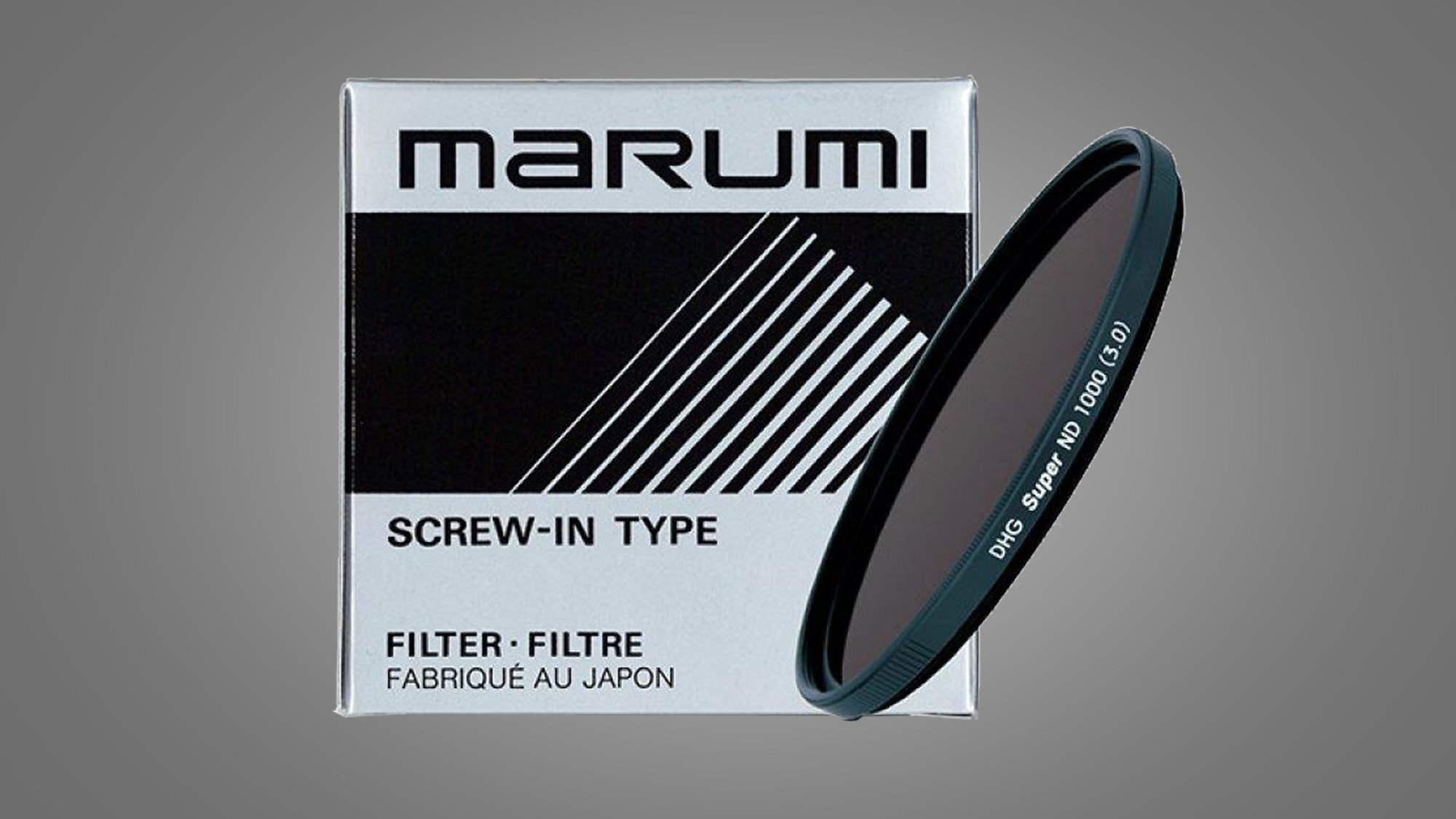
8. Marumi DHG Super ND1000
Reasons to buy
Reasons to avoid
On the surface, these budget-friendly 10-stop circular screw-in filters look very good. They have the typical black-coated metal frame with a slim profile to guard against vignetting. The glass has a low-reflection coating as well black edging to reduce the risk of unwanted reflections. There’s even a water- and grease-repellent coating to help droplets of water to run off and to guard against smeary finger-prints. The filters are available in a range of popular sizes, ranging from 49mm to 82mm, suitable for the vast majority of lenses.
However, while they tend to be priced very competitively, performance is good rather than completely great. We found the 10-stop filter produced a noticeable color cast, as well as a drop in sharpness away from the central region of the image frame. Even so, it makes a good budget buy at the price.

- 10 essential accessories for your new camera
- Best camera accessories: 21 essential bits of kit for your camera
- Best travel tripod: 5 carbon fiber stands for your camera
- Best tripod: 10 options to suit all budgets
- Best camera bag: 10 options to protect your camera kit
- Best flashgun: dedicated strobes for Canon and Nikon DSLRs
- Best ND grad filters: 6 top models tested
- 5 essential photography filters (and why you can't live without them!)
Get daily insight, inspiration and deals in your inbox
Sign up for breaking news, reviews, opinion, top tech deals, and more.